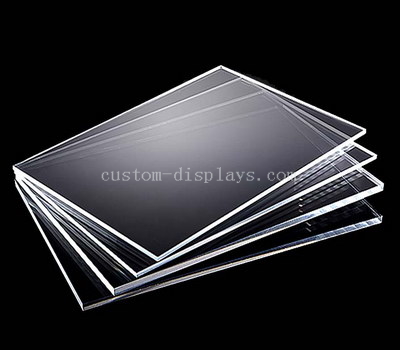Acrylic, also known as polymethyl methacrylate (PMMA), is a versatile and widely used thermoplastic material with a range of applications. It is known for its transparency, impact resistance, and excellent weathering properties. However, like most materials, acrylic is also affected by changes in temperature. In this article, we will explore the relationship between temperature change and the resulting length change in acrylic.

Understanding Thermal Expansion:
Thermal expansion is a phenomenon observed in most solid materials, including acrylic. When heated, the molecules within a material gain kinetic energy, leading to increased vibrations and separation between atoms. This expansion causes the material to increase in length, volume, or both. Conversely, when cooled, the material contracts, resulting in a decrease in length or volume.
Coefficient of Thermal Expansion:
The coefficient of thermal expansion (CTE) is a measure of how much a material expands or contracts in response to temperature changes. It quantifies the change in length (or volume) per unit length (or volume) per degree Celsius (or Kelvin) change in temperature. The CTE of acrylic typically ranges from 70 to 90 x 10^(-6) per °C.
Calculating Length Change:
To calculate the length change of acrylic due to temperature variation, we can use the following formula:
ΔL = α * L * ΔT
Where:
ΔL is the change in length,
α is the coefficient of thermal expansion,
L is the original length of the acrylic, and
ΔT is the change in temperature.
Example:
Let’s consider an acrylic rod with an original length of 1 meter and a coefficient of thermal expansion of 80 x 10^(-6) per °C. If the temperature increases by 10°C, we can calculate the length change as follows:
ΔL = (80 x 10^(-6) per °C) * (1 meter) * (10°C)
ΔL = 8 x 10^(-5) meters
Therefore, the acrylic rod would expand by 8 x 10^(-5) meters or 0.08 millimeters.
Applications and Considerations:
Understanding the length change of acrylic due to temperature variation is crucial in various applications. For instance, in construction, where acrylic sheets are used for glazing, it is essential to account for thermal expansion to prevent buckling or cracking. Similarly, in precision engineering, where tight tolerances are required, the thermal expansion of acrylic must be considered during design and manufacturing processes.
It is important to note that the coefficient of thermal expansion may vary slightly depending on the specific formulation and manufacturing process of acrylic. Therefore, for critical applications or precise calculations, it is advisable to consult the material’s technical data sheet or conduct experimental tests to obtain accurate values.
Conclusion:
Acrylic, a widely used thermoplastic material, undergoes length changes in response to temperature variations. By understanding the coefficient of thermal expansion and utilizing the appropriate formula, we can calculate the expected length change in acrylic. This knowledge is vital in various industries to ensure proper design, installation, and functionality of acrylic components and structures.
